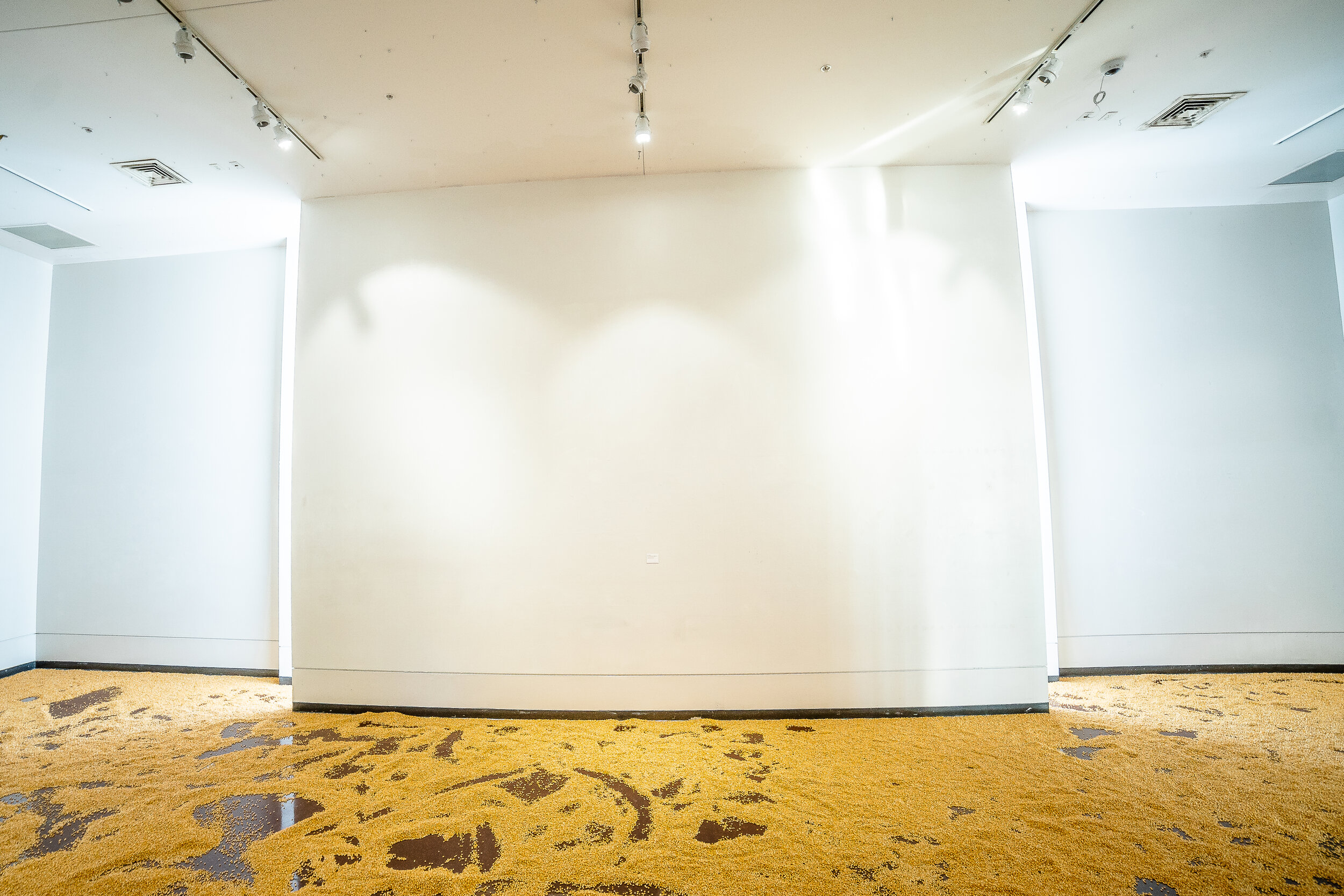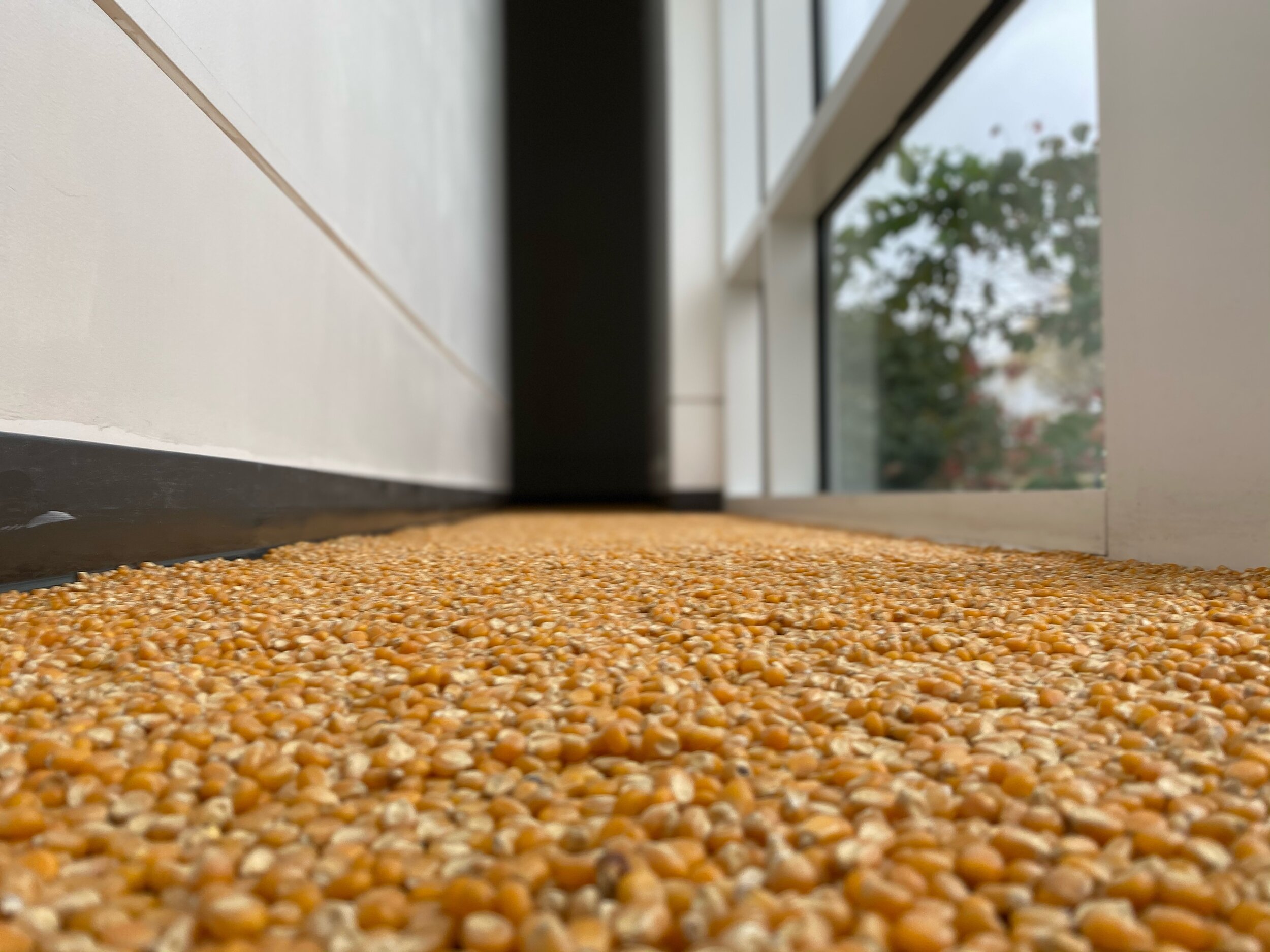This temporary installation occurred during the pandemic winter of 2020 in collaboration with the Constance Gallery at Graceland University in Lamoni, Iowa. It consists of millions of corn kernels deployed in a field condition on the gallery floor.
What we Asked:
This installation continues an ongoing exploration of Vernacular Materiality (VM), which has featured prominently in other recent works in southeast Michigan and India. What are the common localized materials and conditions that contribute to a sense of place?
What we Discovered:
In the context of Iowa, popcorn (Zea mays everta) offers an fascinating and multifaceted example of VM—Hovering in the grey area between plant, seed, agricultural byproduct, and consumer product. The majority of the Nation’s popcorn is produced within a 50 mile radius of Graceland University campus, where the Constance gallery is located. It’s presence can already be felt in the visual periphery by anyone driving through Lamoni on Interstate 35. Zea mays everta could be considered both 100 percent natural and 100 percent artificial, as it has been carefully hybridized and cultivated for selected traits that make it ideal for its intended use as popcorn. It contains the perfect amount of starch and water to allow it to expand to a light and bulbous shape with the ideal surface area for adding various flavorings once popped.
The installation work aligned rather serendipitously with the unfortunate failure of a local grain elevator in the heart of Lamoni that left a thick blanket of pale soybeans and twisted metal scattered across the 100 block of Mainstreet in downtown Lamoni, blocking traffic for several hours. Meanwhile just down the road, a team of masked assistants diligently spilled out and arranged their own agricultural landscape condition on the gallery floor, a gesture that became all the more poignant as it echoed the form of this industrial accident in miniature.
What we Did:
The installation deployed approximately 3.4 million kernels of Zea mays everta in a sprawling field condition, a gesture intended to highlight the distinct anthropogenic landscape phenomenologies of the region, reminiscent of the vast flat agricultural territories extending to every horizon. By amplifying and recontextualizing this ordinary staple that is has become synonymous the American “cornbelt”, the work invites new perceptions of its place in our collective American imaginary.
The installation was left open to the public to interact with in whatever way they wished. Motion-sensitive wildlife cameras stationed above the floor document the human-corn interactions over the course of the installation. The evolution and shifting of the corn field that result from dancing, drawing, walking, laying, etc will be incorporated into the final representations of the project.
Still photos: Michael Gruich (with gratitute)
Special Thanks to Emmanuel McCarter and Emily McKinney, who assisted in installation and deinstallation.









